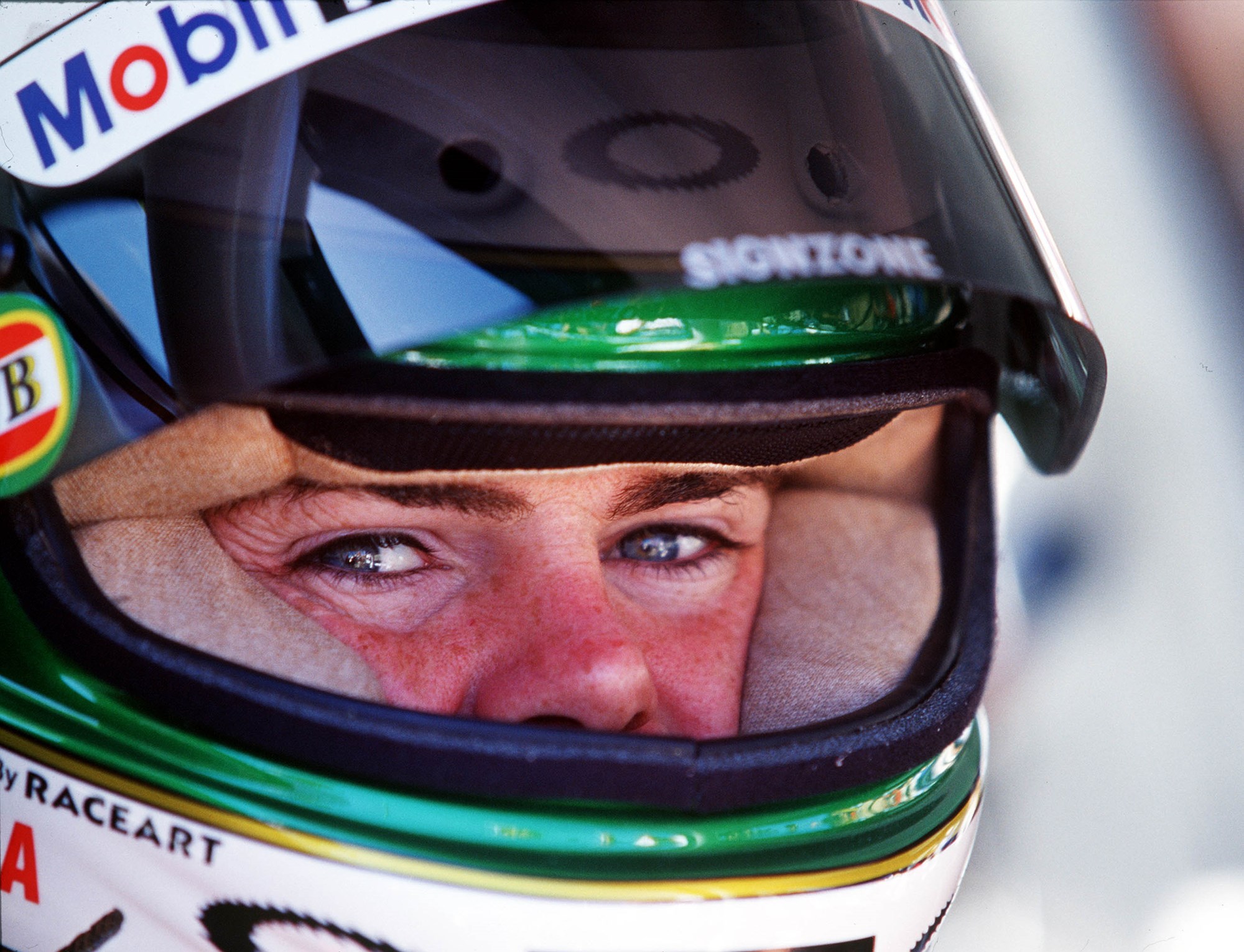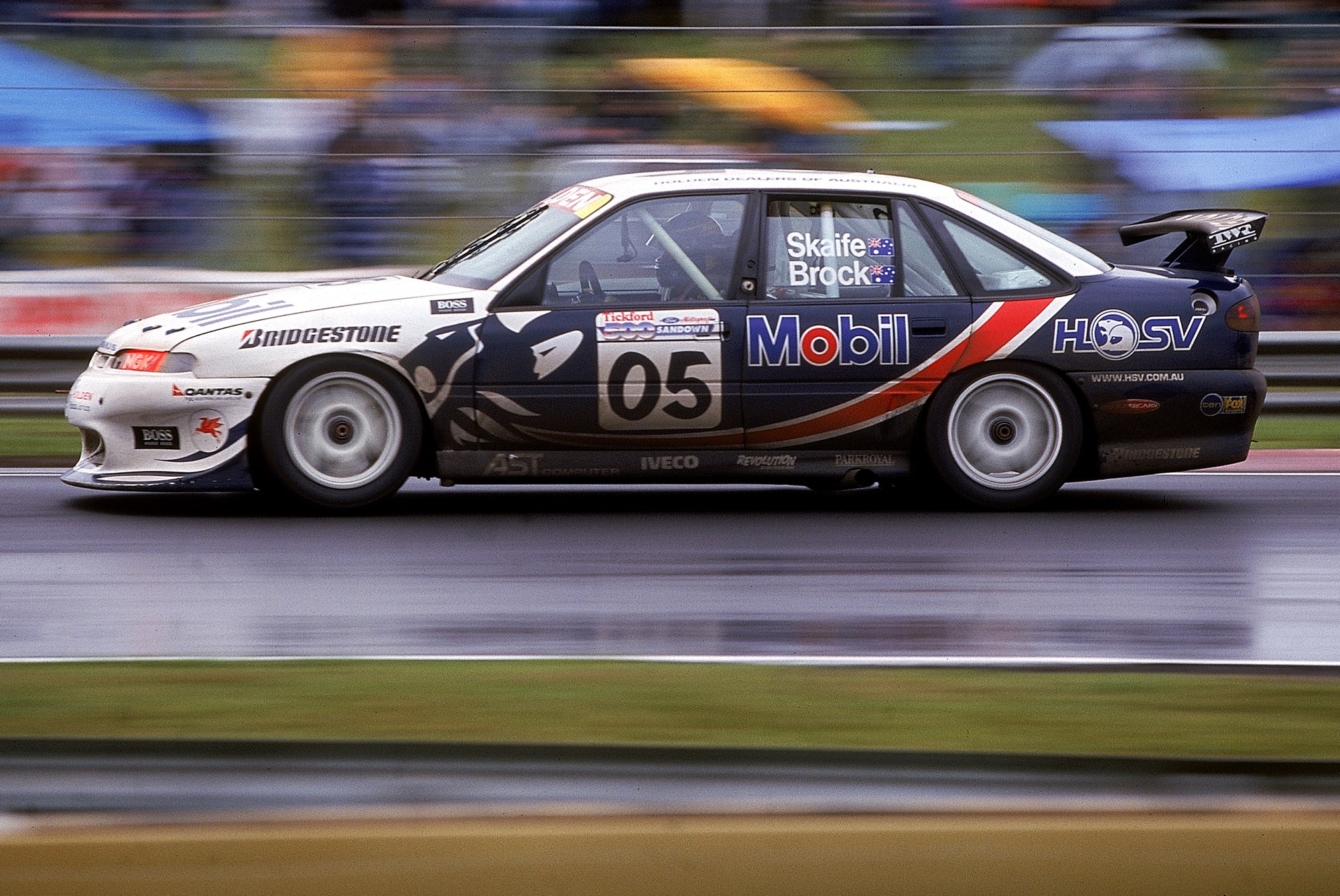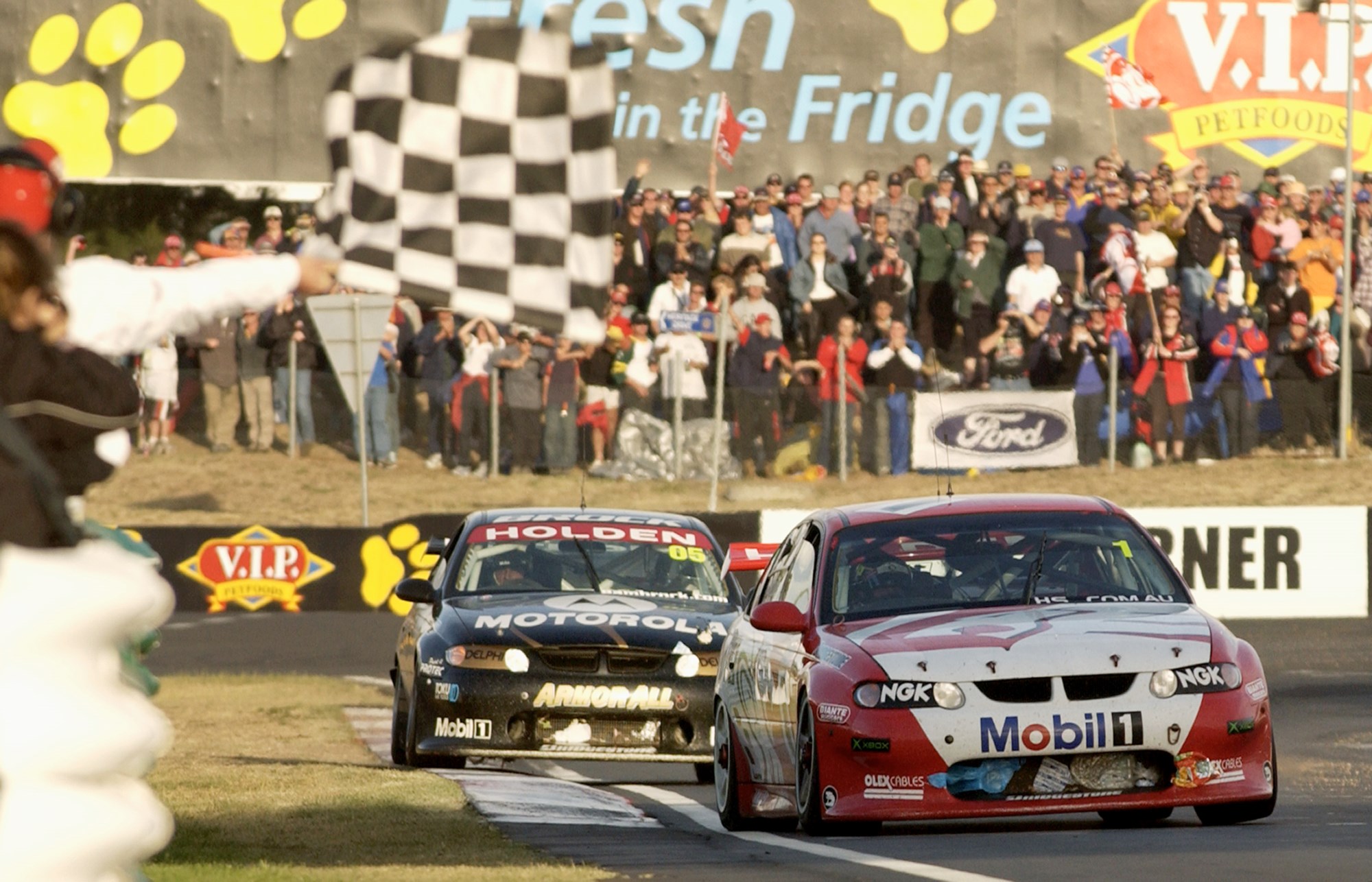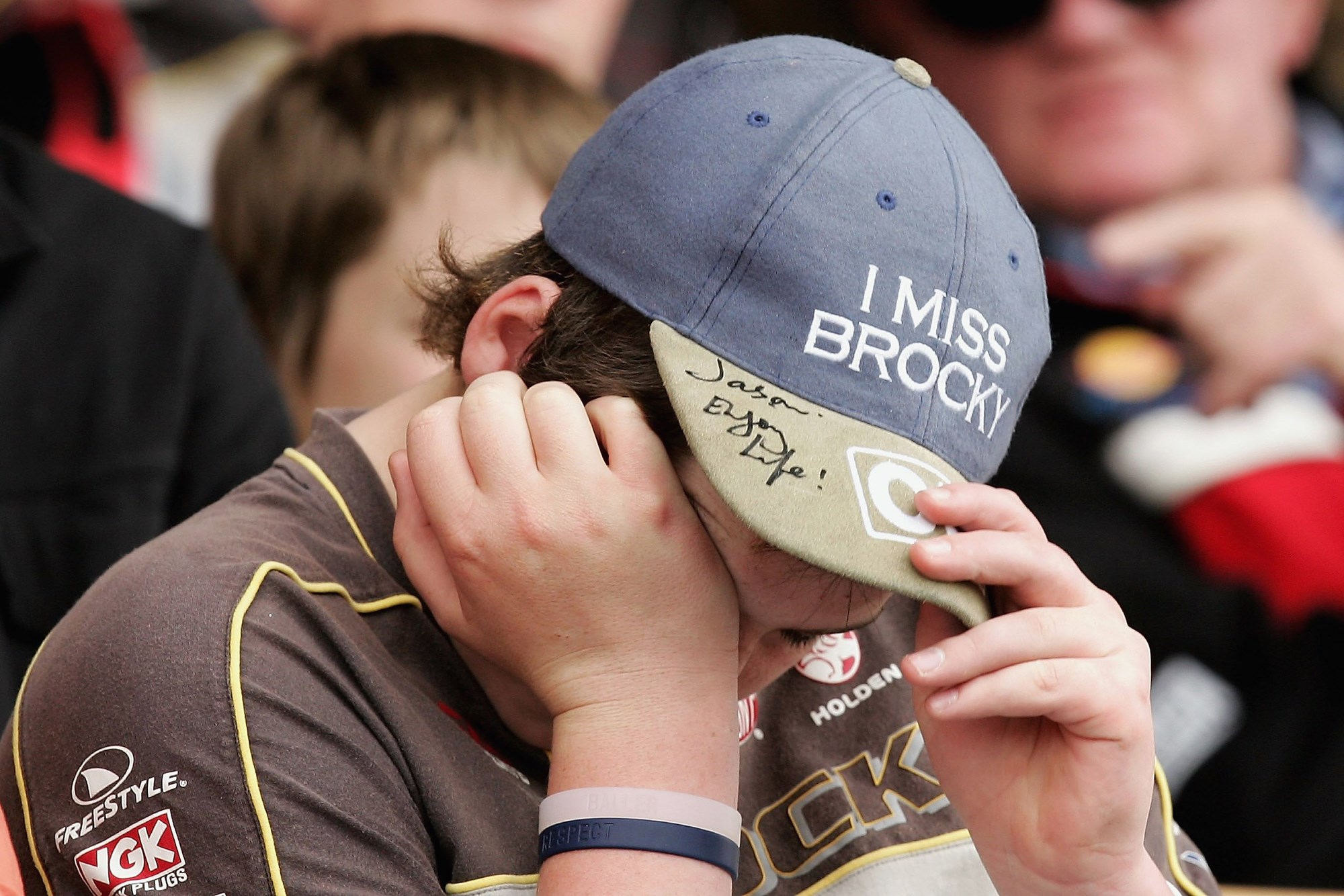Thursday Five: highlights from the Holden Racing Team's story
The worst nightmares of many a red-blooded V8 fan were confirmed earlier this week; Holden announcing that they would be pulling their support from the Holden Racing Team.
Now, one could've looked at that announcement as a positive one, with Holden confirming that they would be committing to the sport after some doubt.
One could've, but many largely didn't. The internet has since been pumped with doom and gloom about the subject, and the 'death' of the Holden Racing Team.
While a Holden factory team will live on, things will never be the same for what used to be the most successful team in the Supercars championship. Today we look back at five periods in history that will go on to define HRT.
A win against the odds
Formed in 1990, the Holden Racing Team latched onto the experience of England’s Tom Walkinshaw. But despite that, they were still seen as something of a minnow team — persevering with a traditional ‘no-replacement-for-displacement’ V8 VL Commodore against their quickly evolving turbocharged rivals.
After finishing eighth in the championship, the team’s lead driver Win Percy took on the Bathurst 1000 with popular home-grown veteran Allan Grice, and the team were again relegated to being an outside chance for a top five at chance at best. Nissan’s new Skyline R32 GT-R dominated much of the pre-race hype, having already made quite an impression with its combination of speed and ludicrous tech.
But in the race, HRT’s David (ironically, given it dwarfed the opposition) grabbed the win, after many of the ‘fast but fragile’ Sierras — and the GT-R — struck trouble. The team’s first race win, in stark contrast to many of their other famous victories, was one that was against all odds.
HRT have always had this extra push of Aussie pride helping prop them up. Ford’s Prodrive Racing had UK roots, as did Triple Eight, while HRT was considered the hometown hero because of their passionate ties to Holden. The 1990 win helped build the foundation for that logic.
“This kid is dynamite!”

It would be just about unheard of in 2016; a factory Supercars Championship squad hiring a driver straight out of Formula Fords to compete in their team at the Bathurst 1000. But, that’s what HRT did in 1994 when they got some kid named Craig Lowndes to fill in for an absent Rickard Rydell.
Lowndes was not just young, but also about as imposing as a box of kittens. Little did anyone know that behind his toothy grin and pimply frontage was someone that would go on to dominate the sport and become a new face of motor racing to living rooms across Australasia.
The moment came with the chequered flag in sight; Lowndes converting a titanic double-stint into the lead of the race after passing one of the best defensive drivers in V8 history, John Bowe, around the outside of Griffins Bend. Sadly for Lowndes and HRT Bowe bit back a few laps later to take the lead back off him, but the damage had been done, and a superstar was born.
Two years later, Lowndes made his debut as a full-time driver for HRT; winning every major accolade in the season including Bathurst. And championship crowns across ’98 and ’99 sealed his status as one of Holden’s most successful drivers.
But more than any of the race wins, Lowndes gained notoriety in the pits through the perception of him as Holden and the Australian Touring Car Championship’s next poster boy; filling in the void of the personable and charismatic Peter Brock through devoting similar amounts of time and effort to any and every fan.
Lowndes left HRT at the end of 2000, but his and HRT’s legacies will always be intertwined.
Salvaging both Brock and Skaife

The theory of HRT being perceived as more home-grown than some of their other blue-chip rivals probably also has connections to their ‘Aussie battler’ image. While the team has enjoyed periods of success, they’ve also struggled through certain eras (their current post-COTF struggles obviously putting paid to their backing from Holden).
It’s a sensation shared by some of the team’s stars; Peter Brock and Mark Skaife.
Brock fell out with Holden in 1987, and subsequently found himself peddling BMWs and Fords through ’88–’90. Only in 1991 did he return to his Holden roots, and even then it was through a relatively private venture.
HRT brought Brock back into the fold (rumour has it, something a few names within Holden weren’t too happy about) in 1994, with the legendary driver proving his worth by scoring the team’s best results over the next two seasons. The decision also helped Brock reach his eventual retirement in 1997 with grace; calling quits on the game while still winning races for the factory team.
Skaife’s story was slightly different. Having made a huge impact at Gibson Motorsport with both Nissans and Holdens, Skaife found his team around him crumble in 1996 when sponsorship from cigarette companies was officially barred, and the Gibson squad struggled to regain a long-term primary sponsor. After winning the title in 1994, Skaife slumped to ninth in 1996, and just 13th in 1997. It looked like his career was coming to a premature end, until HRT gave him a shot alongside Brock for Brock’s final drive at the 1997 Bathurst 1000.
Both drivers produced A-class performances; Skaife taking pole position for the race before Brock laid down one of the most convincing opening stints of his career to hold the lead into the first wave of pit stops. History tells us of course that a win wasn’t to be, but the showing vindicated HRT’s dual driver gamble.
The ‘Golden Child’

Skaife’s ’97 showing was just the start of his tenure at HRT, but he did get a significant helping hand from a firm friend; chassis HRT 045.
Very rarely in modern motorsport do any of the cars take on personas of their own; mainly because so many of them are pretty much the same. But chassis 045 was different. Known a little better within chassis nerd circles as ‘the Golden Child’, 045 would become one of the most successful cars of the V8 Supercar era between its 2001 debut and its retirement in 2003.
Together, Skaife and HRT 045 were the most devastatingly potent driver/chassis combination in HRT history — locking out dual Bathurst and championship victories in 2001–’02 before 045 was converted into VY-specification for 2003.
It seemed like nothing could stop Skaife and 045 over that period (not even the heap of plastic bags that clogged its intake at the 2002 Bathurst enduro), but by 2003 Stone Brothers Racing and their gun Marcos Ambrose had caught up.
The death of Peter Brock

Everyone remembers where they were when Peter Brock's death started to reverberate around the motoring world. I happened to be in a car with my dad, listening to the radio while parked in a parking lot. There were most likely a couple of tears.
But while his untimely death was a loss well mourned, Brock's crash also served as a trigger for fans to rally around the team in the field that had the strongest ties to Holden; HRT.
HRT fans tend to be the most dyed in the wool fans you could ever meet, and it's elements like this that have cemented that position. In this instance, they in particular wore their hearts on their sleeve because — in their world — they had lost one of their own.




